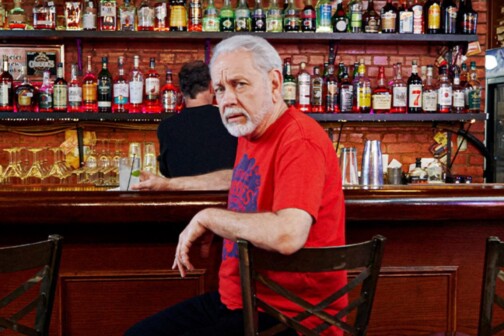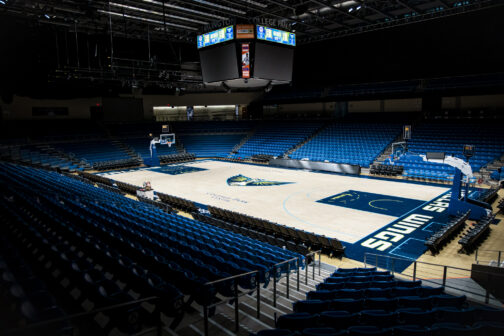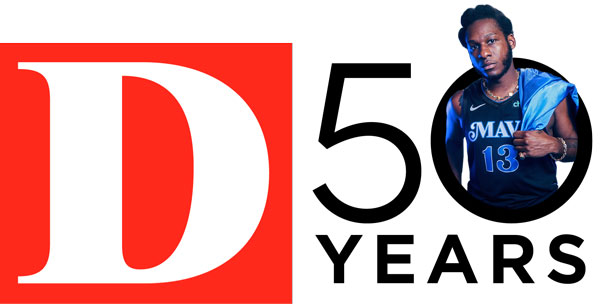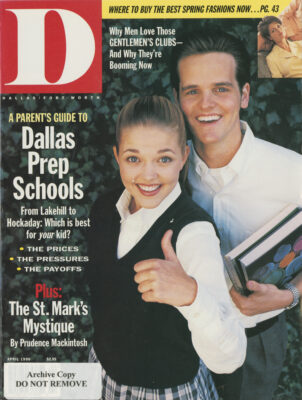Dallas and Fort Worth are mar-velous places to live, or you and I wouldn’t be living here. But when it comes to attracting talent-especially nonprofit talent-we face stiff competition. Dallas may be nice, but San Francisco may be nicer. Cleveland may seem more committed. New York and Boston may confer greater prestige. To attract the land of talent it takes to build the great institutions that are the heart and soul of public life, we need to fight with the only weapon we have: money.
This message is directed specifically to the board members and supporters of our public institutions. Where does your organization rank nationally or worldwide? From my vantage point, I can name only three that compete in the top tier.
Southwestern Medical Center, which encompasses Zale Lipshy and the Children’s Medical Center, and services Parkland Hospital, has emerged under the leadership of Kern Wildenthal as our one great public institution. In its teaching, in its research, and now with Zale Lipshy, in its practice of medicine, Southwestern has created a dynamic that attracts the best young doctors and researchers in the nation. It’s no surprise that talented people want to study under the best people in their specialties. Southwestern has them, including four Nobel Prize winners (more than any other institution in the world), and Wildenthal tells me that if current work being done at Southwestern pays off, there will be more to come.
On a smaller level. Fort Worth’s Kimbell Museum is a gem. Under Edmund Pillsbury its ambition from the start has been to rank among the best museums in the nation. Working on a small scale, it consistently deals with big ideas. From personal experience (in a previous life I was the founder and editor-in-chief of Art & Antiques), I can tell you that no major exhibit is planned in the United States without a call first being placed to the Kimbell to see if the museum will take it. Fort Worth and Dallas art patrons are the beneficiaries of the excellence of one man’s eye.
The other institution I would rank in the top three is the Dallas Opera under Plato Karayanis, which is on a par with the best of New York and Chicago. The persistence that Karayanis has shown and the fidelity to excellence that he has instilled in this little company should be an inspiration and a challenge to every other public institution.
What about our other institutions-our symphonies, our zoos, our universities, our libraries, our theaters?
To put it bluntly, they aren’t good enough. And to be even more blunt, the fault lies with trustees and financial supporters who are willing to settle for second best.
The first problem is knowing what good is. The second problem is having the will and the financial muscle to go out and get it. We’ve all heard the maxim that a great institution is the lengthened shadow of one man, Southwestern, the Kimbell, the opera-and, yes, the Cowboys-prove the point.
To take two examples at random from the public sector, do we really expect the Dallas Zoo or the Dallas Public Library to be the best in the nation when we pay their directors on a civil service scale? If the law keeps us from competing, change the idiot law.
Excellence is not free. Ambition is restless and rarely satisfied. The drive to excellence is ignited by ambition and fueled by determination and dollars. If any trustees of our public institutions think second best is good enough, I recommend a simple course of action: step down. The failure to imagine is a failure to lead. Let the Deion Principle prevail: to want the best and to go out and get it. After all, the best by definition is worth more than the price that’s paid for it.
Get our weekly recap
Brings new meaning to the phrase Sunday Funday. No spam, ever.
Related Articles

Local News
In a Friday Shakeup, 97.1 The Freak Changes Formats and Fires Radio Legend Mike Rhyner
Two reports indicate the demise of The Freak and it's free-flow talk format, and one of its most legendary voices confirmed he had been fired Friday.

Local News
Habitat For Humanity’s New CEO Is a Big Reason Why the Bond Included Housing Dollars
Ashley Brundage is leaving her longtime post at United Way to try and build more houses in more places. Let's hear how she's thinking about her new job.
By Matt Goodman

Sports News
Greg Bibb Pulls Back the Curtain on Dallas Wings Relocation From Arlington to Dallas
The Wings are set to receive $19 million in incentives over the next 15 years; additionally, Bibb expects the team to earn at least $1.5 million in additional ticket revenue per season thanks to the relocation.
By Ben Swanger


